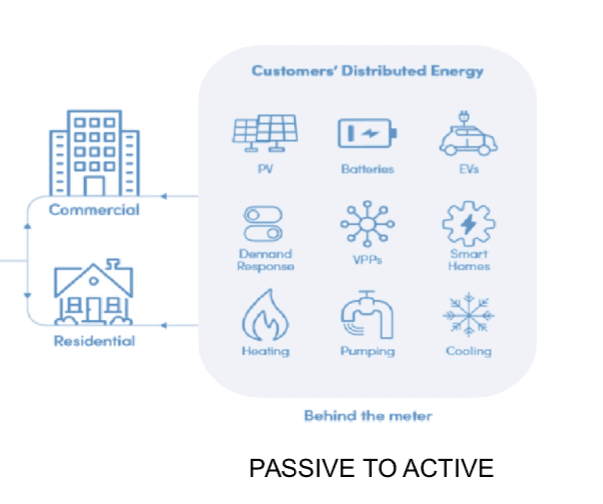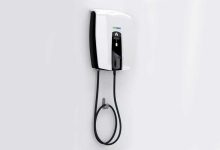State energy ministers are looking to adopt new protocols that will allow network operators to not just switch off rooftop solar when instructed, but also pool pumps, electric vehicle charging stations, hot water systems and even air conditioners.
The new protocols being discussed are not likely to be in force for a few years, but the South Australia state government is looking to fast track the measures, just as it has done with new protocols that allow for rooftop solar to be switched off to maintain the stability of the grid.
But the move is facing resistance, particularly from the electric vehicle sector which says it threatens to blow out costs of home charging stations, and force more EV owners “underground” – using normal electricity sockets to plug in a charging cable.
The new measures were quietly agreed to, in principal, by state energy ministers in 2019, but the details and the timing are yet to be confirmed. What seems inevitable though, is that the “smart home” and what are known as “virtual power plants” will move beyond rooftop solar and battery storage installations, and impact many household appliances.
Often, it will be used to switch off appliances at times of peak demand. The options being discussed will allow for the power to those appliances to be reduced by one quarter, one half, or to be completely shut off. In some instances, such as with EV chargers and hot water systems, they will be switched on, to create “load” in much the same way as the networks plan to do, and are already doing, with rooftop solar and home batteries.
It sounds dramatic, but like the new protocols that allow for rooftop solar to be switched off at times of need, the promise is that it will be used rarely – in terms of hours a year. But that remains to be seen.
One of the arguments for such protocols – and the requirements for all new products that fit under these categories to be so equipped – is that they are considered essential by energy retailers if they are to tailor “smart home” packages that they hope will increase their engagement with customers as the energy transition accelerates.
The big energy utilities, which not so long ago completely ignored what happened on the other side of the connection and the meter, apart from counting kilowatt-hours used and sending a bill to the consumer, now see their future “behind the meter”.
This is starting to happen already, with utilities offering special deals on battery storage and even EV charging, and providing incentives that would allow the utilities to have some discretion over their use, and take advantage of price movements in various grid services market.
What the energy ministers are now proposing is near blanket coverage for all new household appliances that fit in these categories.
They could be in place by 2026, but South Australia is looking to fast track these initiatives because it finds itself at the pointy end of the energy transition, with wind and solar providing 60 per cent of its demand over the past year, and rooftop solar alone providing 100 per cent of local demand on some occasions, and threatening to send “operating demand” into negative territory, meaning the excess rooftop solar power has to be stored, exported to another state, or switched off.
The switching off of rooftop solar has already occurred on at least one occasion in South Australia, to help minimise local generation when the local grid found itself potentially isolated due to repairs to the main link to Victoria.
A presentation last month by South Australia’s Office of the Technical Regulator says flexibility in the “end use of the electricity network” is essential to improving network security amid the rapid changes in the energy mix.
 It cites this presentation from the WA authorities, which talks of the shift from “passive to active” for a range of household appliances. Demand response – and the ability to “orchestrate” such devices – is seen as a key part of managing the shift to renewables and a distributed grid.
It cites this presentation from the WA authorities, which talks of the shift from “passive to active” for a range of household appliances. Demand response – and the ability to “orchestrate” such devices – is seen as a key part of managing the shift to renewables and a distributed grid.
South Australia wants to fast track the adoption of the new DR technologies, to 2024 instead of 2026 in the case of pool pumps and EV chargers, and to as early as 2021 for new hot water systems.
But the proposals for EV chargers is facing resistance from the EV industry, which points out the increased costs for home charger installations, and say the blunt instrument of remote control off switches represents a regression because their technology is already more sophisticated. They also point out that it may mean more households adopt “trickle” charging from their normal electricity outlets, which would mean less control over EV charging.
For hot water systems, the state is looking for means to encourage electric hot water systems to be deployed that would help boost the “solar sponge” that is requried to sop up the growing volumes of rooftop solar.
Currently, the state has many of its electric hot water systems coming on in the middle of the night, a timing devised to provide load to keep coal and gas generators running through the night. That is no longer needed and is becoming a problem.
The state is even considering reversing a current ruling that would allow electric hot waters to be installed in areas where gas is an alternative, driven by the fact that electric hot waters are now powered overwhelmingly by renewables, particularly in the daytime.










